Cost Capitalization
Capitalize software development work based on flexible rules that you set up. Generate and export reports to track effort and expenses effortlessly.
To calculate the Cost Capitalization, it is required to set up capitalizable tickets. HERE is a guide on setting this up!
If you want/need to regenerate all the past reports, click "Restart process".
What is Cost Capitalization?
Cost Capitalization allows you to track and capitalize software development work based on rules you define. It generates reports to help you identify capitalizable resources each month over a 12-month period.
At the top half of the page, you can see the capitalization graphic for the past 12 months. This shows the capitalizable contributor's effort (the number above the bar) divided by months based on the tickets that respect your defined rules.
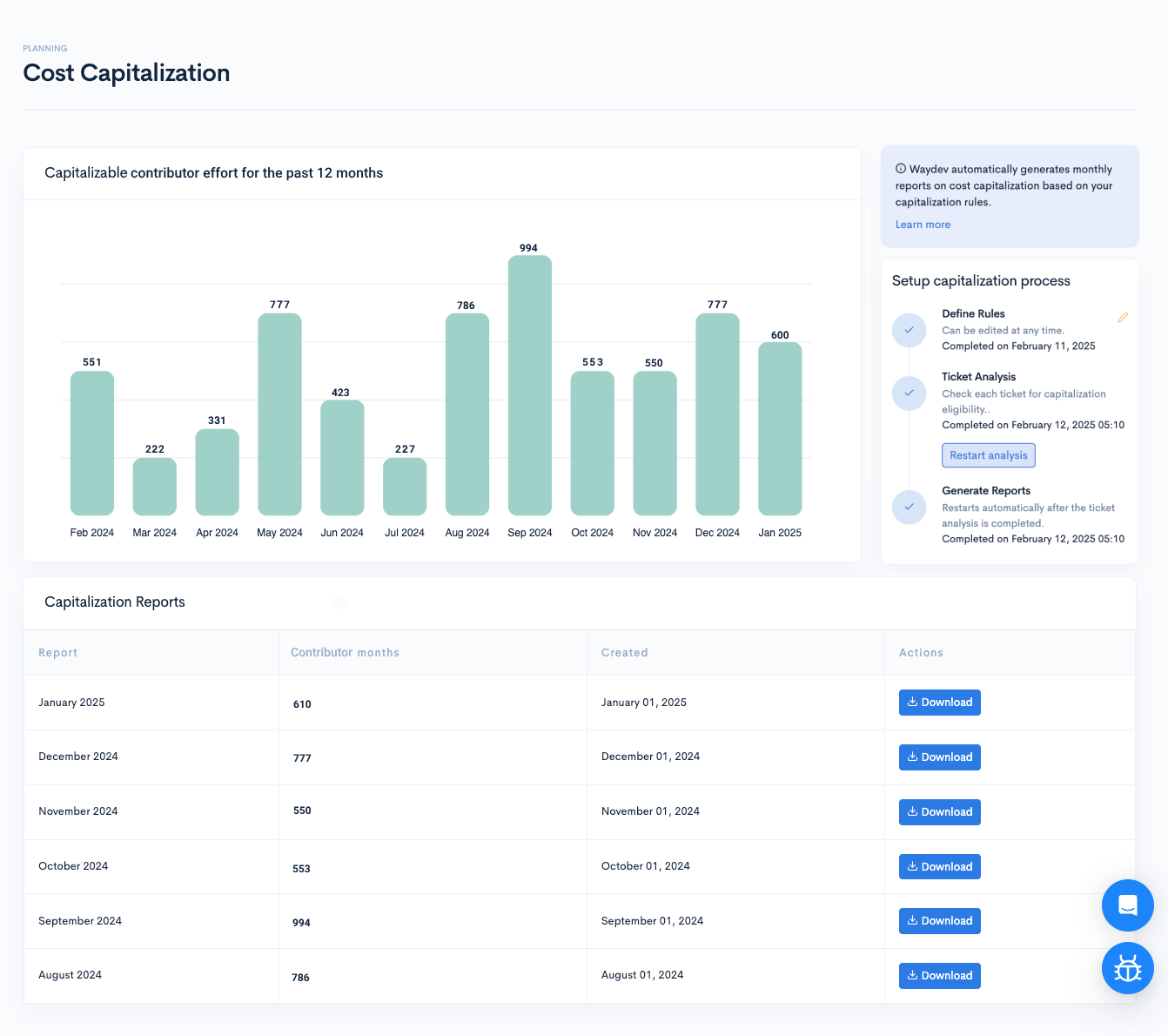
The bottom half of the feature provides downloadable reports for each month. You can view all reports or filter by year, with the option to access up to 36 months of historical data.

You can use the Download Full Year option to download all reports for the selected year (in one CSV file). To download reports for individual months, click the report name or the Download button.
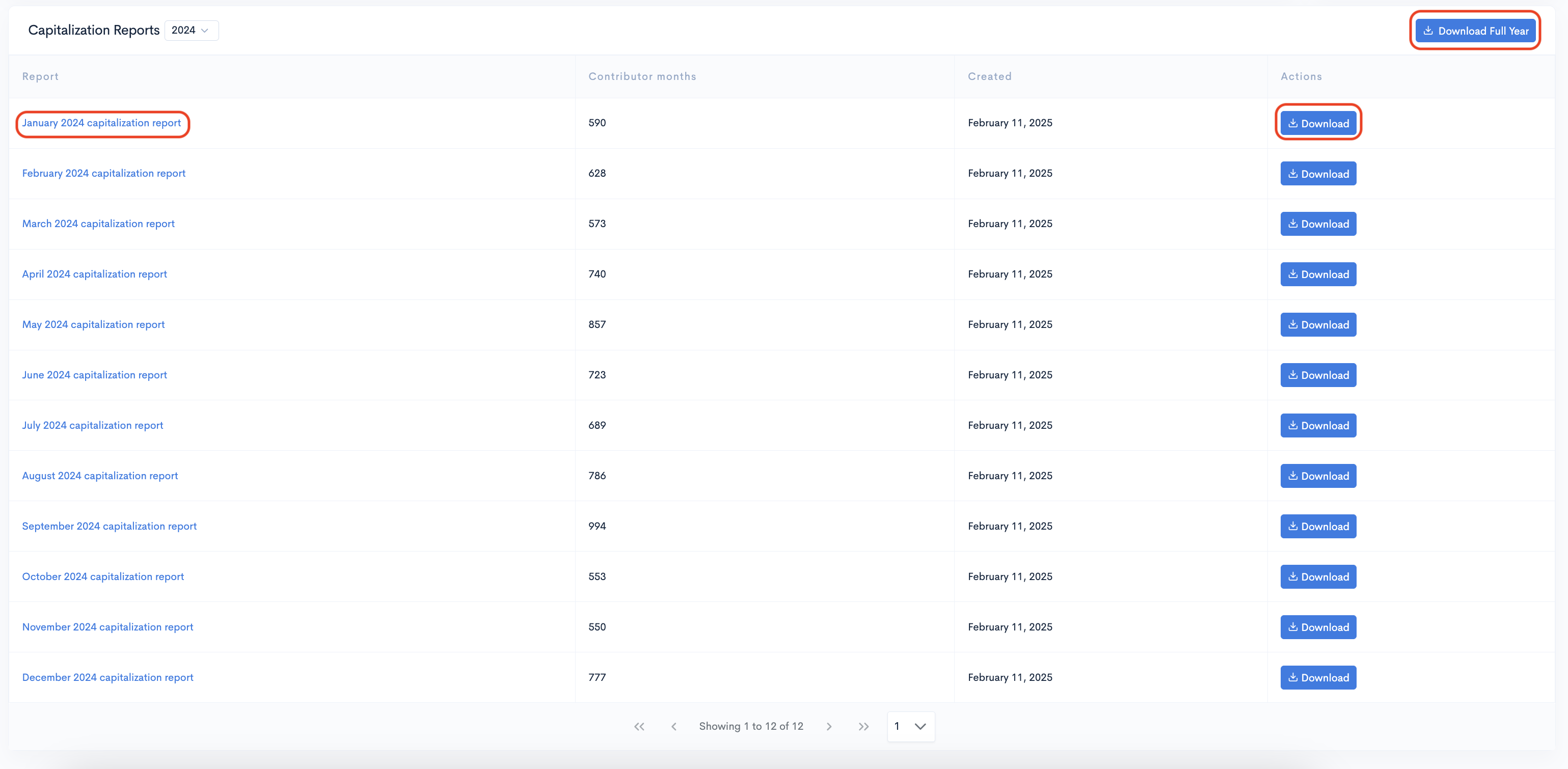
The downloaded CSV contains a detailed report about capitalized work, which contains:
- Contributors Name
- Contributors Email
- Capitalized days
- Total Days
- Capitalized Months
- Total Months
- Capitalized FTE
- Total FTE

What is FTE?
FTE, or "Full-Time Equivalent," is a unit that represents the workload of a full-time employee over a specific period. For example, if two employees each work half-time on a project for a month, their combined effort would equal one FTE for that period. This metric helps quantify the total work invested in a project or task by standardizing it against full-time capacity. FTE is calculated by summing the total workdays spent on a project within a given timeframe and dividing by the number of days in that period. When contributors split their time across multiple tasks, Waydev attributes portions of their workday to each issue and aggregates these efforts to determine the total FTE allocated to each task.
Configure Cost Capitalization
In order to calculate the Cost Capitalization, Waydev requires to set up capitalizable tickets. Below is a guide on setting this up!
You can define the rules at any point. If needed, click the pen, and it will redirect you to the integration page
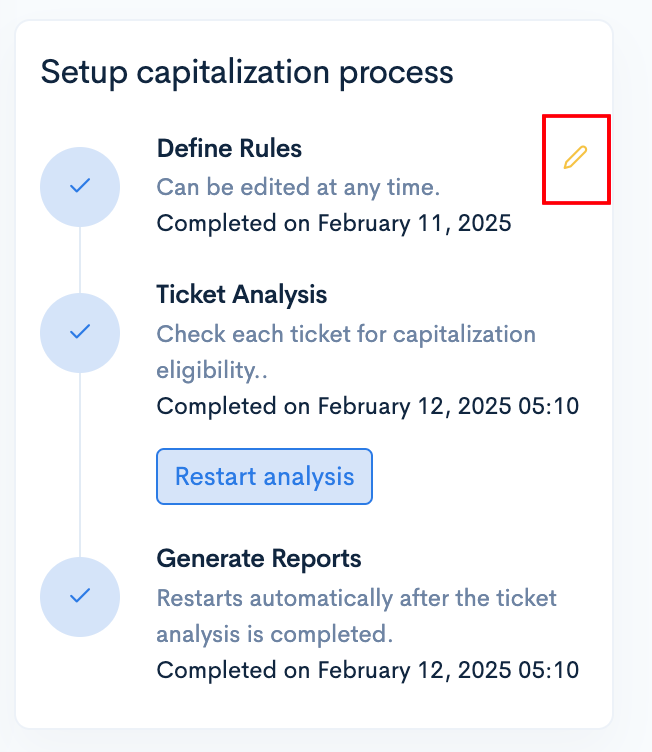
To view data in the Cost Capitalization report, you need to configure the Capitalization settings, defining which tickets are capitalizable and what not.
You have two options for configuring this:
- Configure all ticket projects from the integration – Apply the capitalization settings to all ticket projects from the issue tracking system integration.
- Configure ticket projects individually – Configure the projects individually, applying different settings.
Configure all ticket projects from the integration
Step 1: From Setup->Settings; click Actions for the project management integration and select Configure Ticket Projects.

Step 2: At the bottom of the pop-up modal click Capitalization setting.
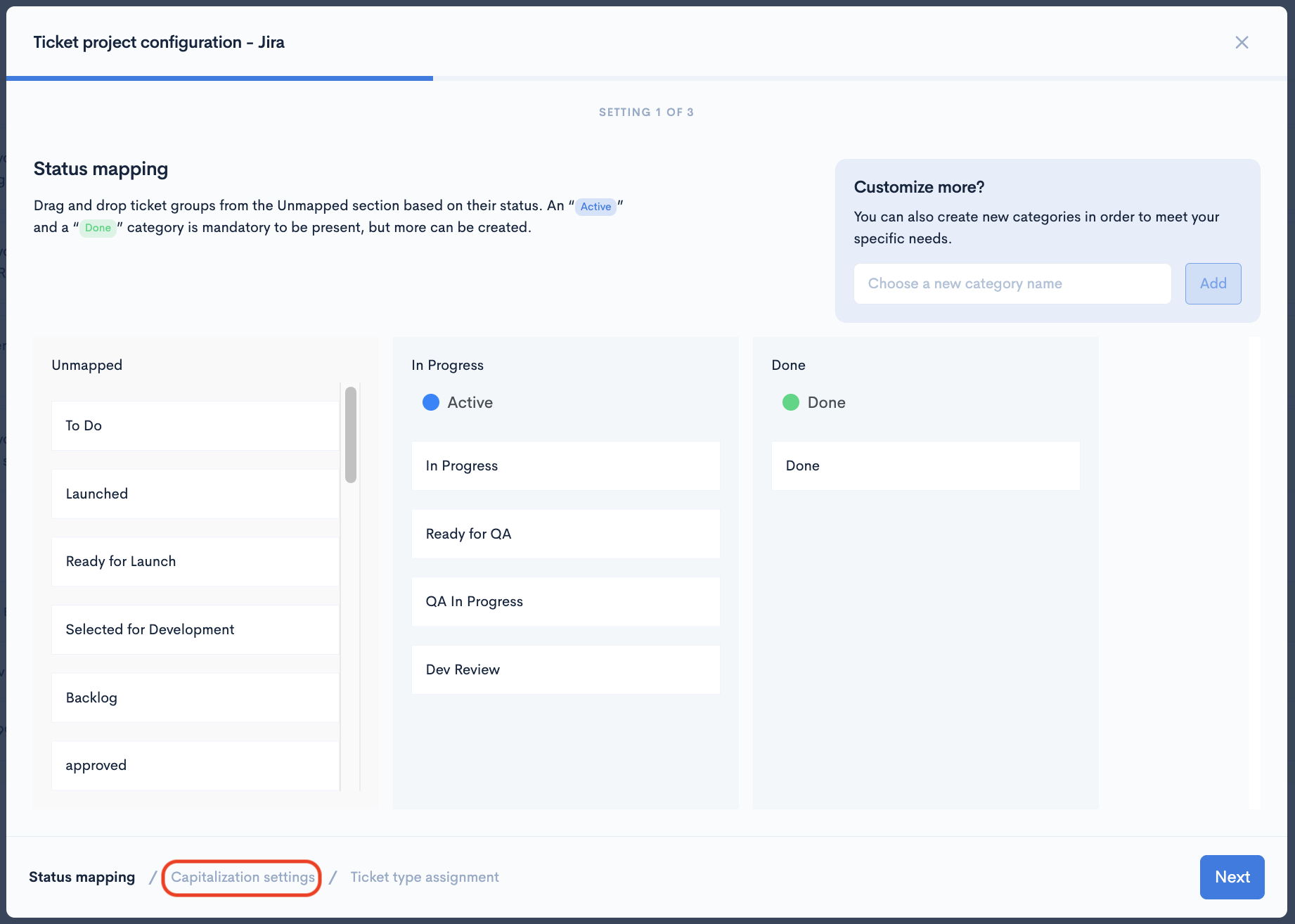
Step 3: Click the Add rule button.
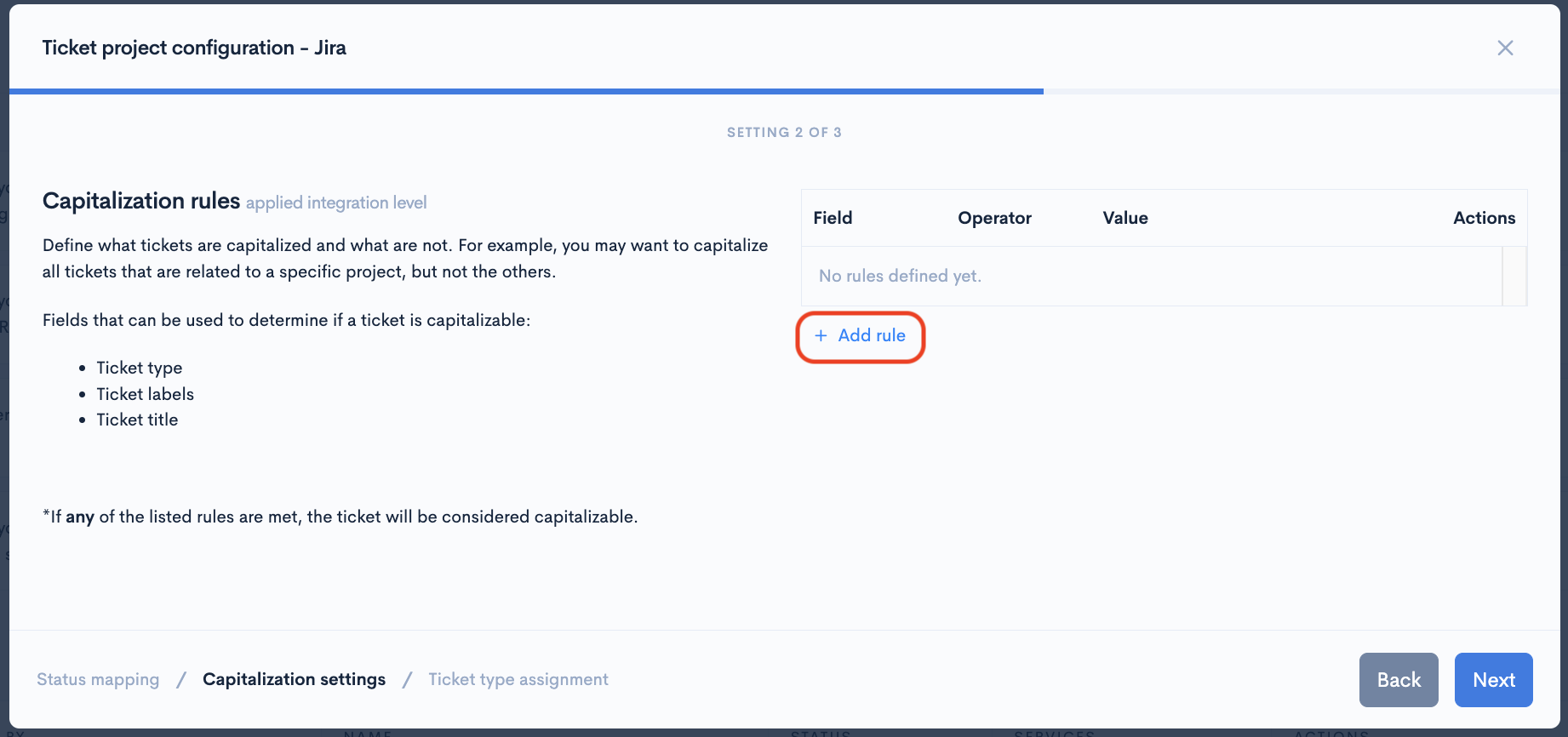
Step 4: From the Field drop-down, choose what tickets should be capitalizable based on the following:
- Ticket Title
- Ticket Type
- Ticket Labels
Step 4.1: For the Ticket Title complete the Value field and click on Create.
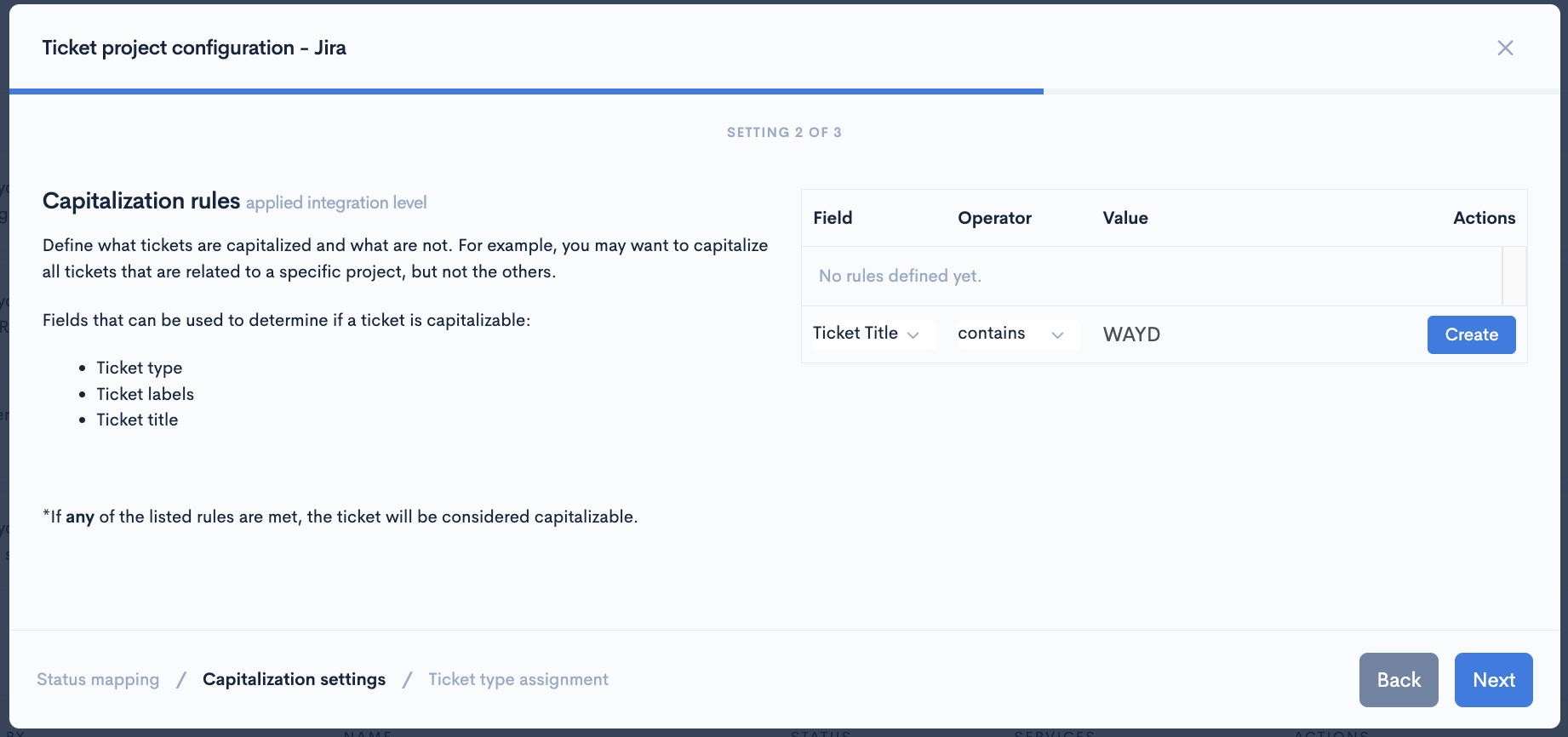
Step 4.2: For the Ticket Type you can change the Operator to be either equals or is part of.
The "equals" option allows you to select only one ticket type, while "is part of" allows you to select multiple options from the drop-down menu.
After you're done, make sure to click on Create.
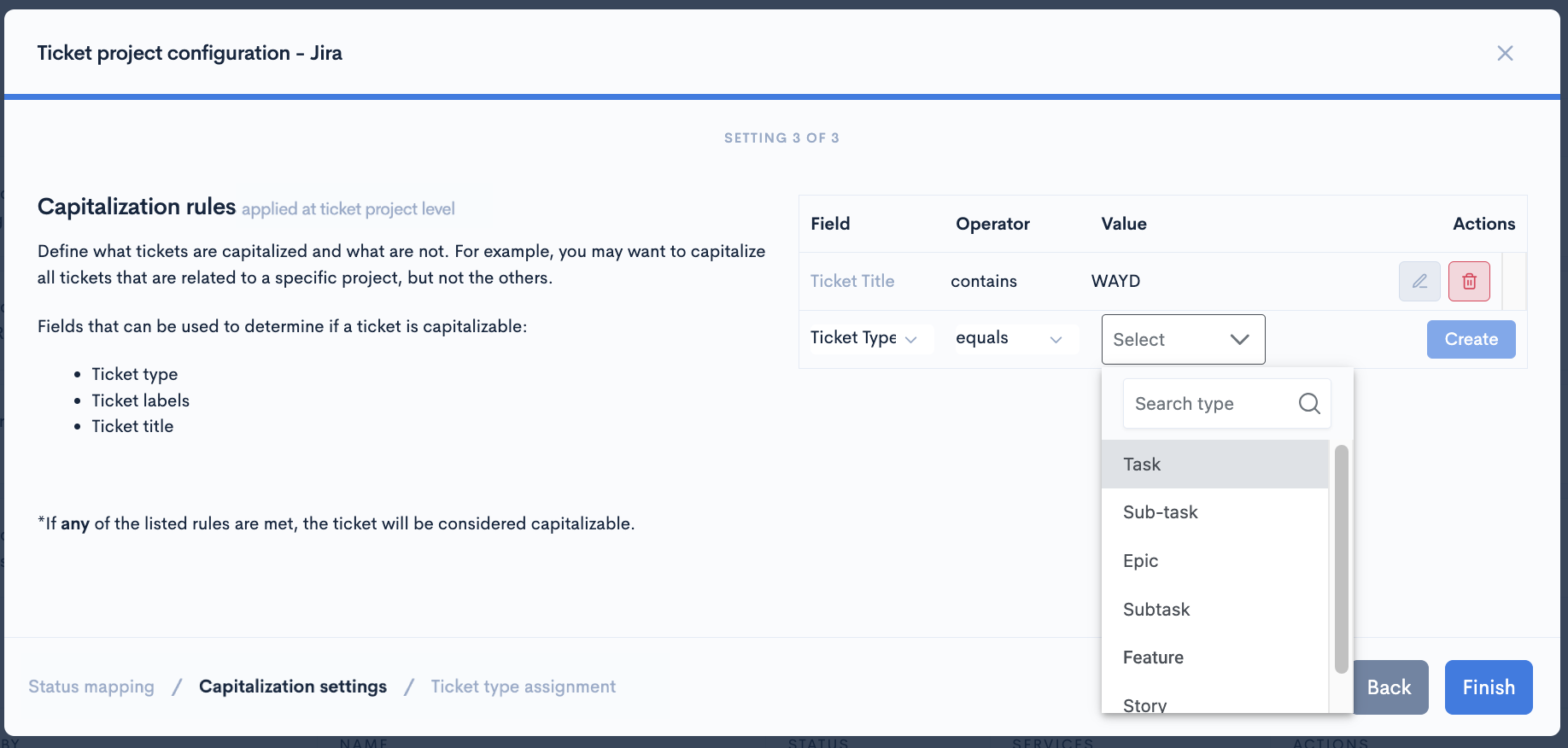
Operator is "equals"
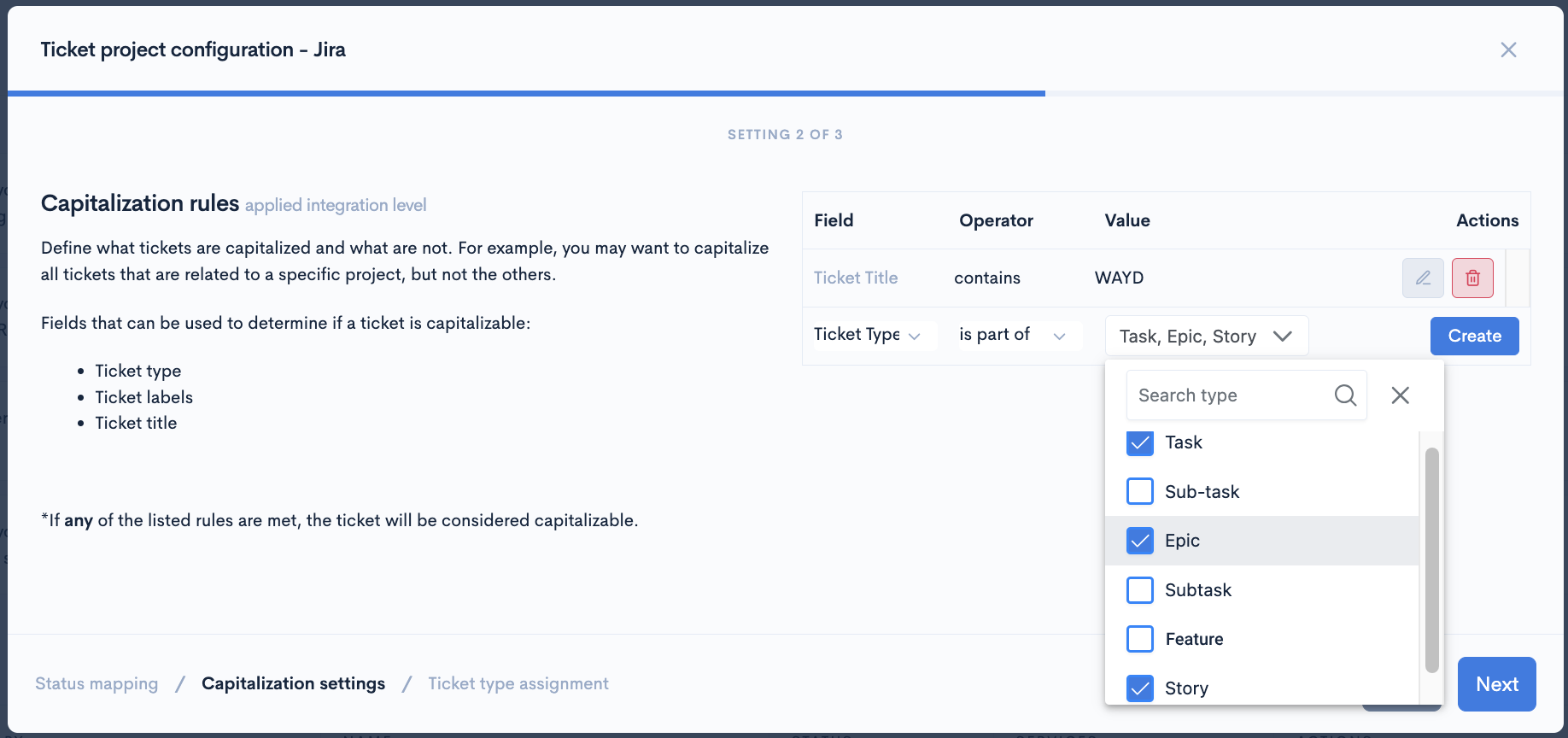
Operator is "is part of"
Step 4.3: Select the Ticket Labels you want from the drop-down list and click on Create.
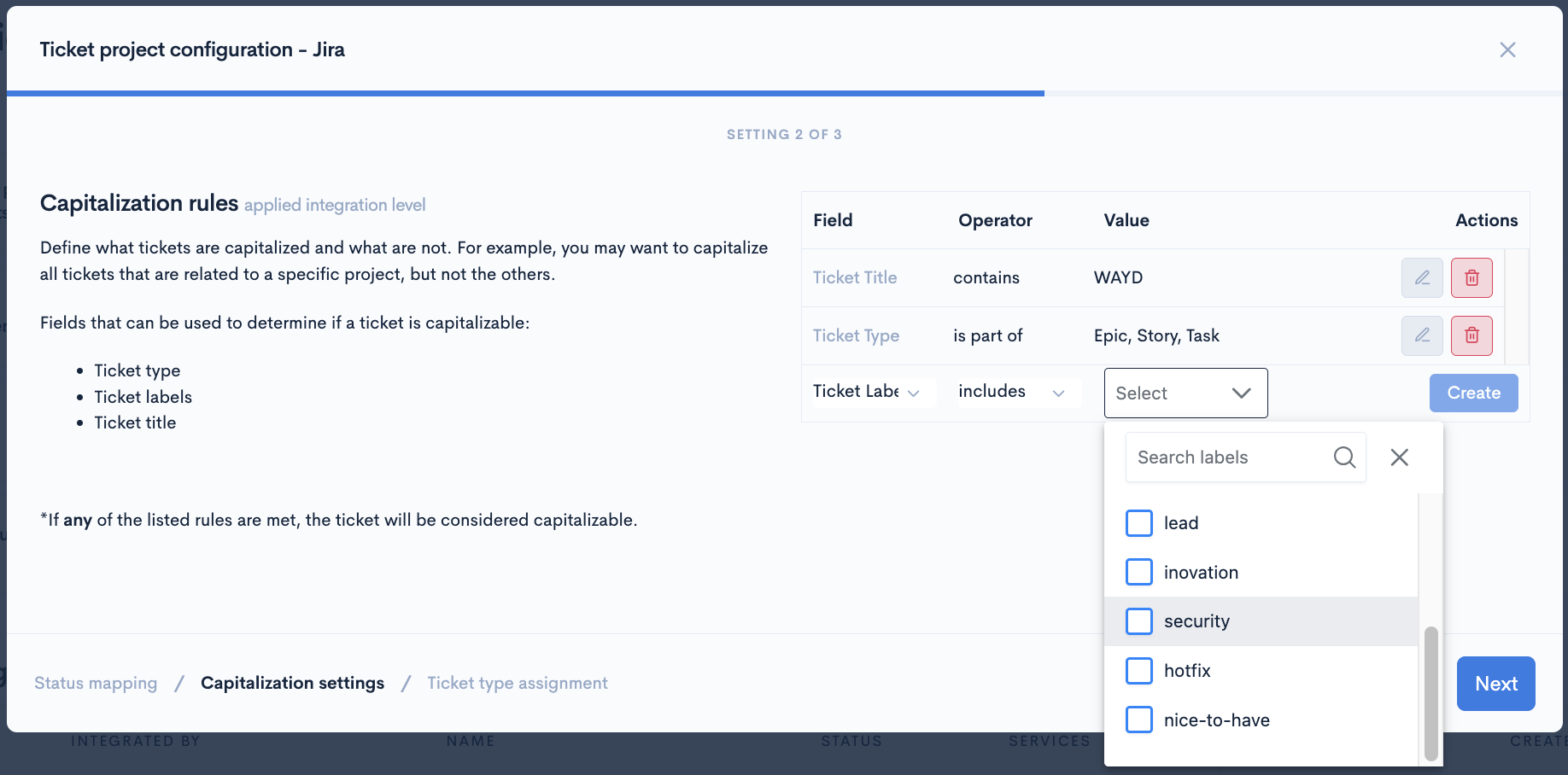
Step 5: When done, click Next or close the modal as the actions are automatically saved.
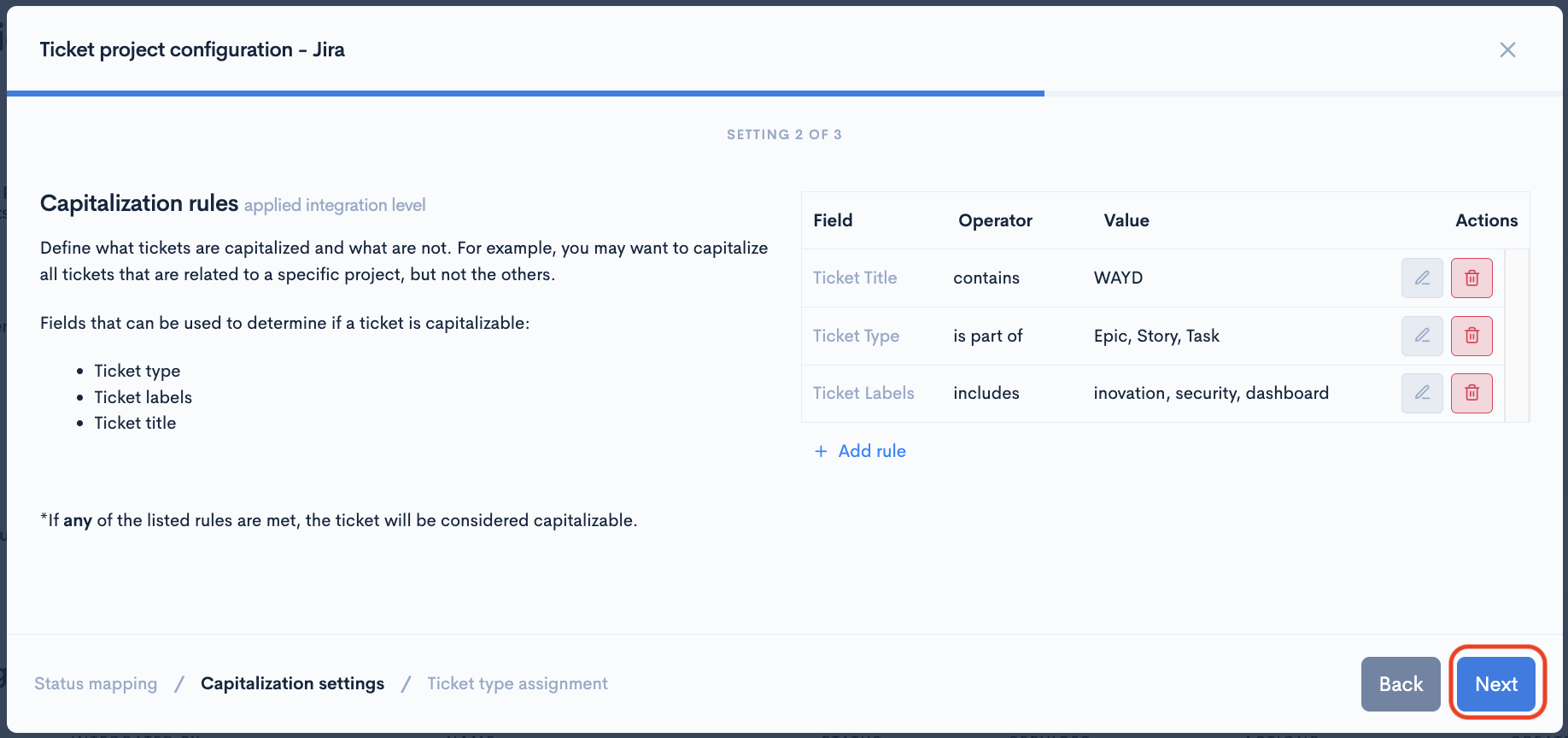
You can also configure ticket projects individually by going to Ticket Projects and clicking on Configure and following the steps above.
Updated 3 months ago